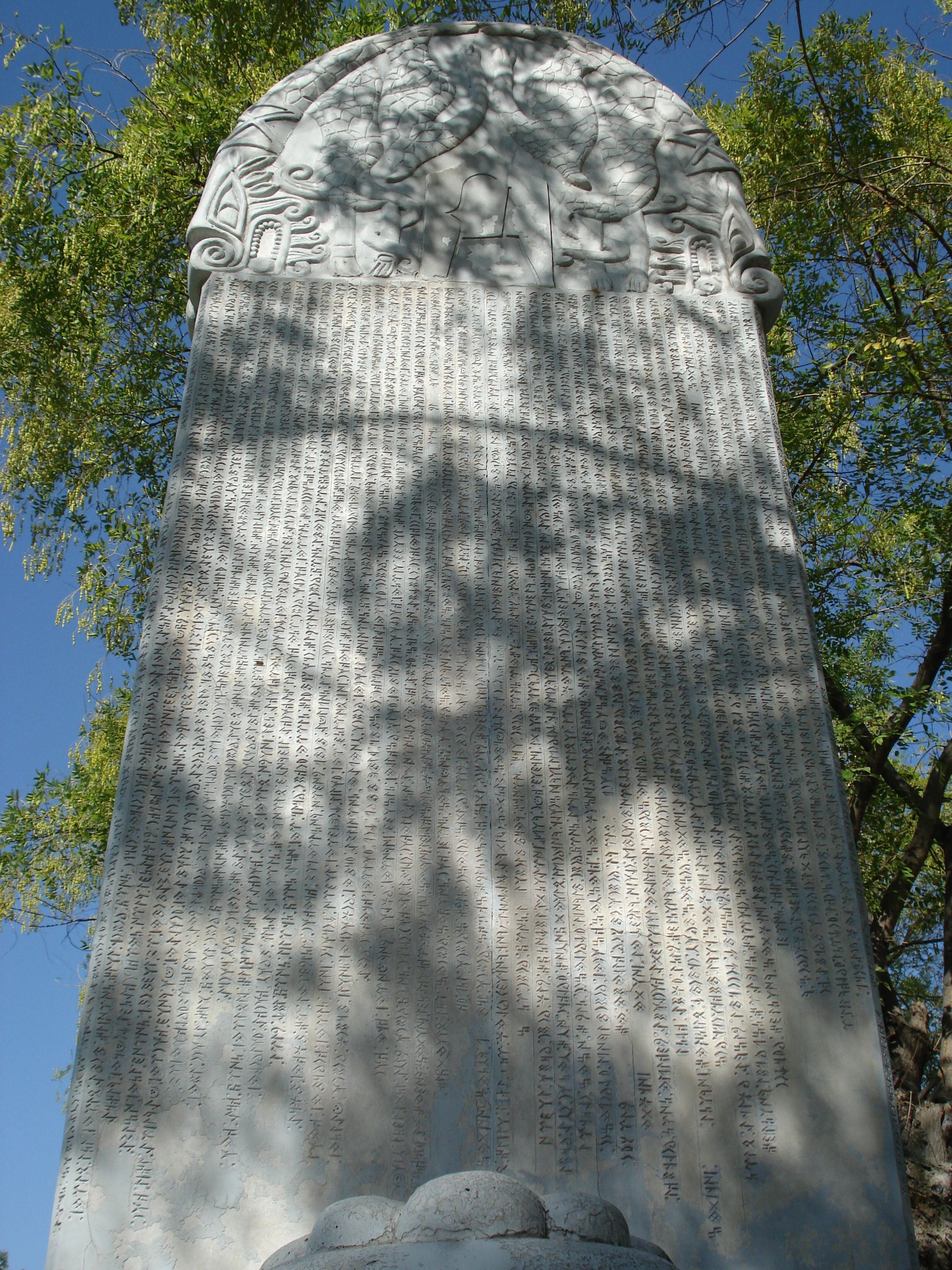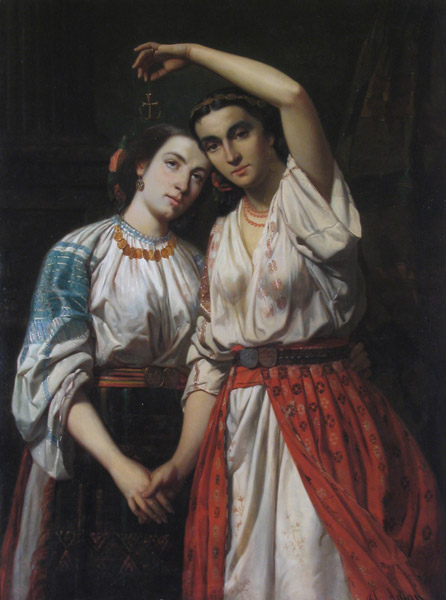|
2 Mai
2 Mai (, "2 May") (according to the Socialist Republic of Romania records) or Două Mai (according to the founding decree signed by Mihail Kogălniceanu in 1887) is a village in the Limanu commune, Constanța County, Dobrogea, Romania. It is found on the shoreline at a distance of north of Vama Veche and south of Mangalia. Doi Mai is also a summer vacation destination. Its name (then ''Două Mai'' ) was chosen to celebrate 2 May 1864, when Domnitor Alexandru Ioan Cuza dissolved the Legislative Assembly (''Adunarea Legislativă'') of the United Principalities of Moldavia and Wallachia to promote his reforms. Nine years before the founding of the village, Northern Dobruja was given to Romania through the treaty of Berlin after it had been taken from the Ottoman Empire at the end of the Russo-Turkish War of 1877–1878. Russian voluntary eunuchs of the Old Believers sect, being persecuted in their homeland of the Russian Empire, found refuge here in the 19th century, amongs ... [...More Info...] [...Related Items...] OR: [Wikipedia] [Google] [Baidu] |
Counties Of Romania
A total of 41 counties (), along with the municipality of Bucharest, constitute the official administrative divisions of Romania. They represent the country's NUTS-3 (Nomenclature of Territorial Units for Statistics – Level 3) statistical subdivisions within the European Union and each of them serves as the local level of government within its borders. Most counties are named after a major river, while some are named after notable cities within them, such as the county seat. The earliest organization into ''județe'' of the Principalities of Wallachia and Moldavia (where they were termed ''ținuturi'') dates back to at least the late 14th century. For most of the time since modern Romania was formed in 1859, the administrative division system has been similar to that of the French departments. The system has since changed several times and the number of counties has varied over time, from the 71 ''județe'' that existed before World War II to only 39 after 1968. The curr ... [...More Info...] [...Related Items...] OR: [Wikipedia] [Google] [Baidu] |
Alexandru Ioan Cuza
Alexandru Ioan Cuza (, or Alexandru Ioan I, also Anglicised as Alexander John Cuza; 20 March 1820 – 15 May 1873) was the first ''domnitor'' (prince) of the Romanian Principalities through his double election as List of monarchs of Moldavia#Post-Phanariote period, Prince of Moldavia on 5 January 1859 and List of princes of Wallachia#Post-Phanariote period, Prince of Wallachia on 24 January 1859, which resulted in Unification of Moldavia and Wallachia, the unification of the two states. He was a prominent figure of the Moldavian Revolution of 1848. Following his double election, he initiated a series of liberalism, liberal and progressivism, progressive reforms that contributed to the modernization of Romanian society and of state structures. As ruler of the Romanian Principalities, he supported a political and diplomatic activity for the recognition of the union of Moldavia and Wallachia by the suzerain Ottoman Empire and achieved constitutional and administrative unity betw ... [...More Info...] [...Related Items...] OR: [Wikipedia] [Google] [Baidu] |
Tatars
Tatars ( )Tatar in the Collins English Dictionary are a group of Turkic peoples across Eastern Europe and Northern Asia who bear the name "Tatar (term), Tatar". Initially, the ethnonym ''Tatar'' possibly referred to the Tatar confederation. That confederation was eventually incorporated into the Mongol Empire when Genghis Khan unified the various steppe tribes. Historically, the term ''Tatars'' (or ''Tartars'') was Endonym and exonym, applied to anyone originating from the vast North Asia, Northern and Central Asian landmass then known as Tartary, a term which was also conflated with the Mongol Empire itself. More recently, however, the term has come to refer more narrowly to related ethnic groups who refer to themselves as ''Tatars'' or who speak languages that are commonly referr ... [...More Info...] [...Related Items...] OR: [Wikipedia] [Google] [Baidu] |
Greeks
Greeks or Hellenes (; , ) are an ethnic group and nation native to Greece, Greek Cypriots, Cyprus, Greeks in Albania, southern Albania, Greeks in Turkey#History, Anatolia, parts of Greeks in Italy, Italy and Egyptian Greeks, Egypt, and to a lesser extent, other countries surrounding the Eastern Mediterranean and Black Sea. They also form a significant Greek diaspora, diaspora (), with many Greek communities established around the world.. Greek colonies and communities have been historically established on the shores of the Mediterranean Sea and Black Sea, but the Greek people themselves have always been centered on the Aegean Sea, Aegean and Ionian Sea, Ionian seas, where the Greek language has been spoken since the Bronze Age.. Until the early 20th century, Greeks were distributed between the Greek peninsula, the western coast of Asia Minor, the Black Sea coast, Cappadocia in central Anatolia, Egypt, the Balkans, Cyprus, and Constantinople. Many of these regions coincided to ... [...More Info...] [...Related Items...] OR: [Wikipedia] [Google] [Baidu] |
Russian Empire
The Russian Empire was an empire that spanned most of northern Eurasia from its establishment in November 1721 until the proclamation of the Russian Republic in September 1917. At its height in the late 19th century, it covered about , roughly one-sixth of the world's landmass, making it the list of largest empires, third-largest empire in history, behind only the British Empire, British and Mongol Empire, Mongol empires. It also Russian colonization of North America, colonized Alaska between 1799 and 1867. The empire's 1897 census, the only one it conducted, found a population of 125.6 million with considerable ethnic, linguistic, religious, and socioeconomic diversity. From the 10th to 17th centuries, the Russians had been ruled by a noble class known as the boyars, above whom was the tsar, an absolute monarch. The groundwork of the Russian Empire was laid by Ivan III (), who greatly expanded his domain, established a centralized Russian national state, and secured inde ... [...More Info...] [...Related Items...] OR: [Wikipedia] [Google] [Baidu] |
Old Believers
Old Believers or Old Ritualists ( Russian: староверы, ''starovery'' or старообрядцы, ''staroobryadtsy'') is the common term for several religious groups, which maintain the old liturgical and ritual practices of the Russian Orthodox Church, as they were before the reforms of Patriarch Nikon of Moscow between 1652 and 1657. The old rite and its followers were anathematized in 1667, and Old Belief gradually emerged from the resulting schism. The antecedents of the movement regarded the reform as heralding the End of Days, and the Russian church and state as servants of the Antichrist. Fleeing persecution by the government, they settled in remote areas or escaped to the neighboring countries. Their communities were marked by strict morals and religious devotion, including various taboos meant to separate them from the outer world. They rejected the Westernization measures of Peter the Great, preserving traditional Russian culture, like long beards for men. ... [...More Info...] [...Related Items...] OR: [Wikipedia] [Google] [Baidu] |
Russo-Turkish War (1877–1878)
The Russo-Turkish War (1877–1878) was a conflict between the Ottoman Empire and a coalition led by the Russian Empire which included United Principalities of Moldavia and Wallachia, Romania, Principality of Serbia, Serbia, and Principality of Montenegro, Montenegro. Precipitating factors included the Russian goals of recovering territorial losses endured during the Crimean War of 1853–1856, re-establishing itself in the Black Sea and supporting the political movement attempting to free Balkan nations from the Ottoman Empire. The Romanian army had around 114,000 soldiers in the war. In Romania the war is called the Russo-Romanian-Turkish War (1877–1878) or the Romanian War of Independence, Romanian War of Independence (1877–1878). The Russian-led coalition won the war, pushing the Ottomans back all the way to the gates of Constantinople, leading to the intervention of the Western European great powers. As a result, Russia succeeded in claiming provinces in the Caucasus, n ... [...More Info...] [...Related Items...] OR: [Wikipedia] [Google] [Baidu] |
Ottoman Empire
The Ottoman Empire (), also called the Turkish Empire, was an empire, imperial realm that controlled much of Southeast Europe, West Asia, and North Africa from the 14th to early 20th centuries; it also controlled parts of southeastern Central Europe, between the early 16th and early 18th centuries. The empire emerged from a Anatolian beyliks, ''beylik'', or principality, founded in northwestern Anatolia in by the Turkoman (ethnonym), Turkoman tribal leader Osman I. His successors Ottoman wars in Europe, conquered much of Anatolia and expanded into the Balkans by the mid-14th century, transforming their petty kingdom into a transcontinental empire. The Ottomans ended the Byzantine Empire with the Fall of Constantinople, conquest of Constantinople in 1453 by Mehmed II. With its capital at History of Istanbul#Ottoman Empire, Constantinople (modern-day Istanbul) and control over a significant portion of the Mediterranean Basin, the Ottoman Empire was at the centre of interacti ... [...More Info...] [...Related Items...] OR: [Wikipedia] [Google] [Baidu] |
Northern Dobruja
Northern Dobruja ( or simply ; , ''Severna Dobrudzha'') is the part of Dobruja within the borders of Romania. It lies between the lower Danube, Danube River and the Black Sea, bordered in the south by Southern Dobruja, which is a part of Bulgaria. History Around 600 BC, the Greeks colonized the Black Sea shore and founded numerous fortresses: Tomis (today's Constanța), Callatis, Histria, Argamum, Heracleea, Aegysus. The Greeks engaged in trade with the Dacians who lived on the main land. Dobruja became a Roman province after the conquest of the Dacian Tribes. One of the best preserved remnants of this period is the Capidava citadel. Between the 7th and 14th century, Dobruja was part of the First Bulgarian Empire and the Second Bulgarian Empire. For a long period in the 14–15th century, Dobruja became part of Wallachia. The territory fell under Ottoman Empire, Ottoman rule from the mid-15th century until 1878, when it was awarded to Romania for its role in the Russo-Turkish ... [...More Info...] [...Related Items...] OR: [Wikipedia] [Google] [Baidu] |
United Principalities Of Moldavia And Wallachia
The United Principalities of Moldavia and Wallachia (), commonly called United Principalities or Wallachia and Moldavia, was the personal union of the Principality of Moldavia and the Principality of Wallachia. The union was formed on when Alexandru Ioan Cuza was elected as the '' Domnitor'' (Ruling Prince) of both principalities. Their separate autonomous vassalage in the Ottoman Empire continued with the unification of both principalities. On , Moldavia and Wallachia formally united to create the Romanian United Principalities, the core of the Romanian nation state. In February 1866, Prince Cuza was forced to abdicate and go into exile by a political coalition led by the Liberals; the German prince Karl of Hohenzollern-Sigmaringen was offered the Throne and, on he entered Bucharest for the first time. In July the same year, a new constitution came into effect, giving the country the name of Romania; internationally, this name was used only after 1877, since at the time it ... [...More Info...] [...Related Items...] OR: [Wikipedia] [Google] [Baidu] |
Domnitor
''Prince Domnitor'', in full ''Principe Domnitor'' (Romanian pl. ''Principi Domnitori'') was the official title of the ruler of Romania between 1862 and 1881. It was usually translated as "prince regnant" in English and most other languages, and less often as "grand duke". "Domnitor" is an adjective derived from the Romanian word "''domn''" (''lord'' or ''ruler'') and, in turn, from the Latin " Dominus". The title Domn had been in use since the Middle Ages and it is also the Romanian equivalent to the Slavic Hospodar. Moldavian and Wallachian rulers had used this term for their title of authority as the head of state, while " voievod" represented the military rank as the head of the army. The title acquired an officially recognized meaning after Moldavia and Wallachia united to form the Romanian United Principalities under Alexander John I, who had become the ruler of both states since 1859. Alexander John abdicated in 1866 and was succeeded by Carol I, who promulgated the ... [...More Info...] [...Related Items...] OR: [Wikipedia] [Google] [Baidu] |





